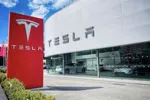Car manufacturers may be attempting to ‘cheat’ new vehicle emissions tests in a bid to ‘manipulate’ future targets imposed by the EU, The European Commission has found.
The Financial Times reported on how OEMs have allegedly been starting Worldwide Harmonised Light Vehicle Test Procedure (WLTP) and Real Driving Emissions (RDE) test procedures with discharged batteries – so that the engine works harder to generate a charge – and disabled start/stop systems in a bid to artificially inflate emissions results.
In November, The European Commission demanded that car manufacturers cut emissions by 15% between 2020 and 2025, and 30% by 2030.
Evidence uncovered by the FT indicates that manufacture may be attempting to “trick” officials into setting more lenient future emissions standards in 2020, which is a transition year when a new baseline will be set for emissions against which future cuts will be measured.
Miguel Arias Cañete, EU commissioner for climate, told the newspaper: "We don’t like tricks. “We have seen things that we don’t like. We are going to do all the necessary work so that the starting points are the real ones.”
The FT discovered its evidence in an unpublished, five-page briefing in which the commission’s Joint Research Centre said it found evidence from 114 data sets indicating that some carmakers were “configuring their test vehicles in such a way that the measured WLTP are inflated”.
William Todts, executive director at Transport & Environment, a Brussels-based clean energy group was quoted in the FT. He said: “By manipulating WLTP, they are cheating the 2025/2030 targets even before they have been agreed.”












Login to comment
Comments
No comments have been made yet.